The Teatro Español of Madrid is one of the most unique and traditional buildings of the capital. Suffice it to say that this building was constructed in 1583 and since then and until today has not ceased to represent plays. This circumstance has made the Teatro Español the oldest surviving theatre if we take into account the continued performance of plays because no other theatre in the world has represented performances so uninterruptedly during so much time. This theatre is located in Plaza de Santa Ana which is one of the most charming squares in the centre of Madrid, as we have already seen in this blog.
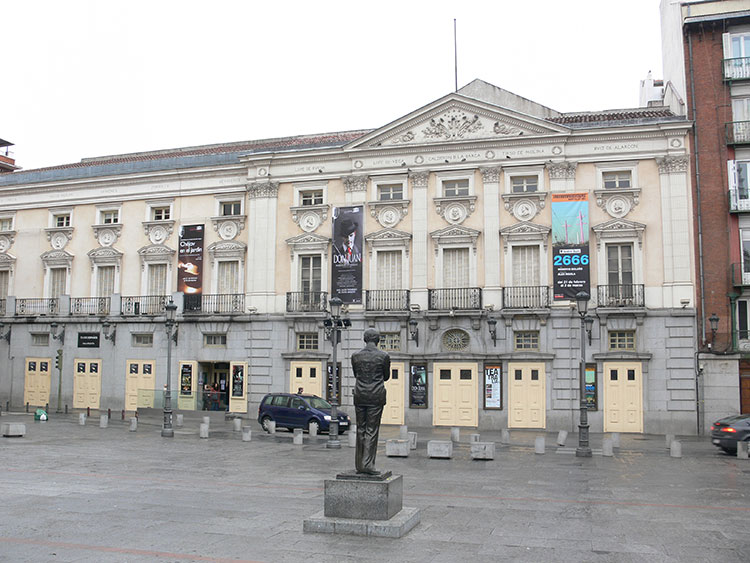
We can say that this theatre is a model of survival as it underwent two fires and had to be twice rebuilt from the ashes. This is why we have chosen it for our section Restoring is Living, being our last article La Casa del Reloj. What was the birth of the Teatro Español like? When did the building catch fire? How was it able to resurrect from the two devastating fires? Today, we will tell you about it in our blog: come and join us!
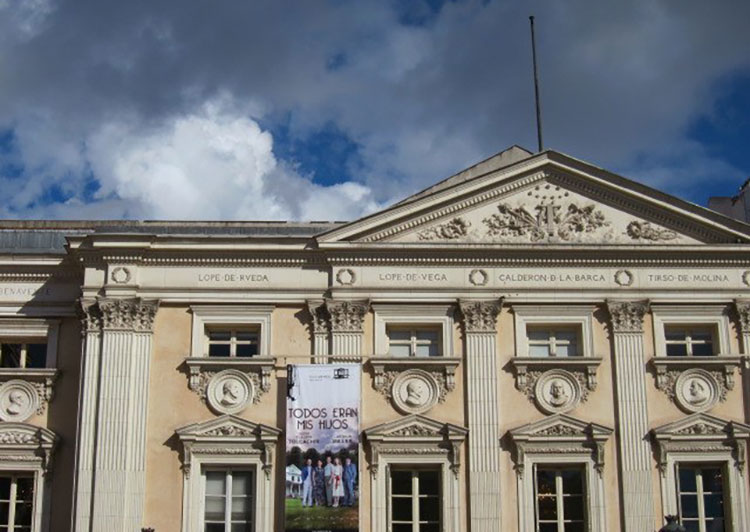
A BIT OF HISTORY
We can state that Felipe II created the beginning of the Teatro Español when in 1565 he authorized the Cofradía de la Sagrada Pasión to perform plays there. This place was located in Calle del Príncipe, however its first performance did not take place until 1583, without any seats nor stands. At first, this place was called Corral del Príncipe. According to the documents in the Archivo de la Villa de Madrid, the plans for the first building for the theatre were drawn by Pedro de Ribera in 1735 and they were similar to the current building.
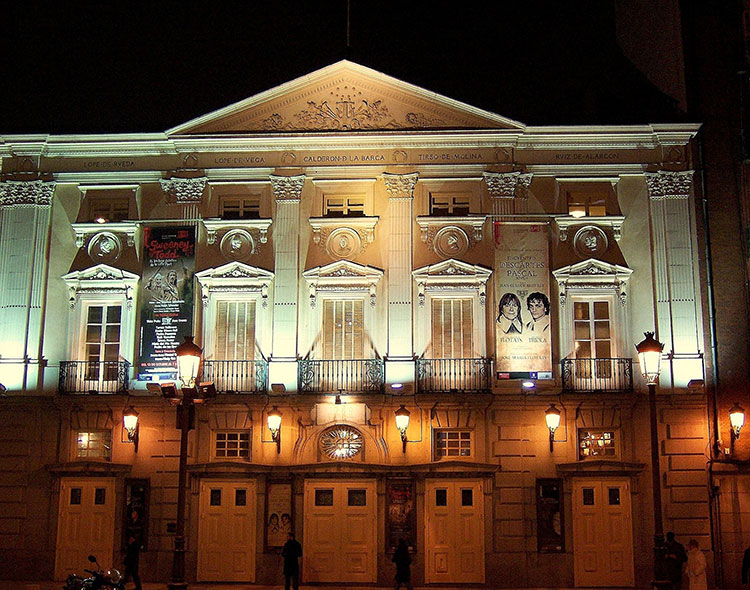
In any case, it only lasted for 9 years because in 1744 it was pulled down in order to build a new theatre which was called Coliseo del Príncipe. This new theatre was created by the architects Juan Bautista Sachetti and Ventura Rodriguez. And so we arrive to the year 1802 when the first fire in the theatre took place: only the exterior structure resisted the fire. The architect Juan de Villanueva was given the task of reconstructing it: it would take five years to finish. In 1807, the new theatre was inaugurated having a larger stage and a more beautiful façade with many balconies and a neoclassical triangular pediment. During the reign of Isabel II, this theatre becomes the National Theatre and is called Teatro Español. In 1851, the Town Hall regains ownership. Unfortunately, in 1975 a second fire takes place and made a new construction absolutely necessary. It was not until 1980 that the theatre was inaugurated once more.
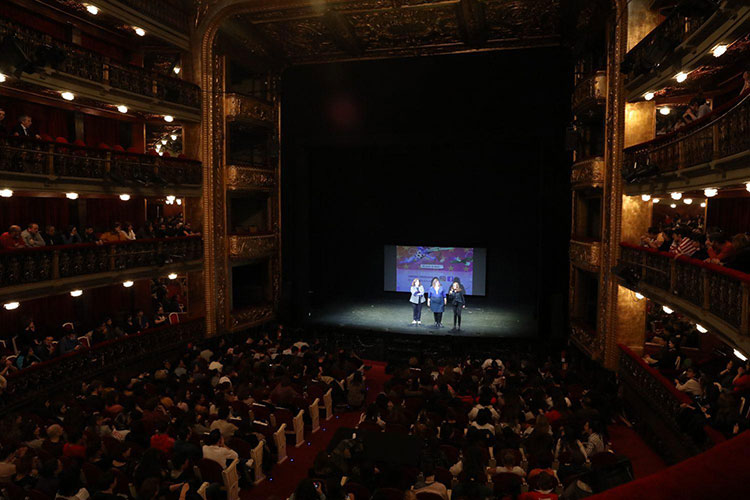
THE FINAL AND DEFINITIVE REFORM
In 1995, the definitive reform of the Teatro Español was carried out by the architects Andrés Oñoro and Enrique Ortega. A rehearsal hall was built as well as a library, a cafeteria and an exhibition hall, besides other rooms for offices and storage. Currently, the theatre has two prominent places: the Main Hall (with a capacity for 735 people and located on three floors all of them with perfect visibility and excellent acoustics), and the Margarita Xirgu Hall (which is located where the Café Príncipe used to be and has a capacity for 110 people). In addition, there are other interesting spaces such as the Salón de Té (used for institutional events), the Salón Tirso de Molina (used for interviewing and photographing the artists), the Parnasillo (where a collection of portraits is accommodated), and the Espacio Andrea D´Odorico (used for press conferences, lectures and exhibitions).
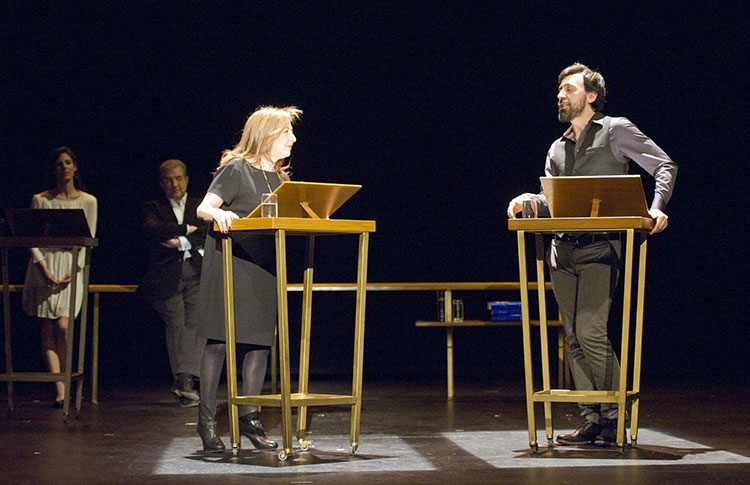
DID YOU KNOW THAT…?
Since the XVIII century, what was then the Teatro Príncipe had a group of unconditional followers known as Los Chorizos. This group had an enormous rivalry with the followers of the Teatro de la Cruz (which does not exist nowadays) and they were known as Los Polacos.
Picture 01: Andreas Praefcke
Picture 02: Carmen Voces
Picture 03: Fernando López
Picture 04: Diario de Madrid
Picture 05: RAE



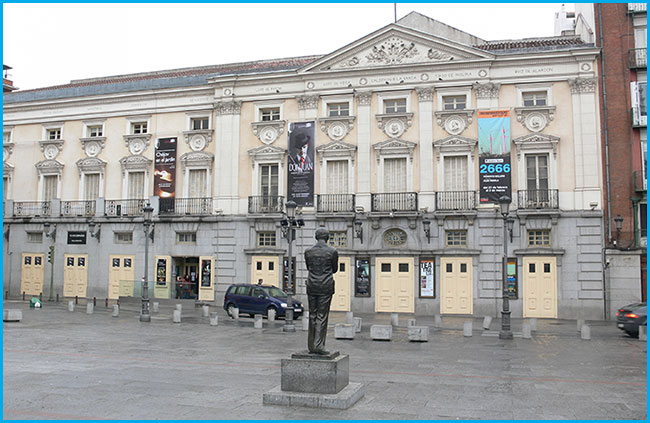
 Spanish
Spanish English
English